
In This eNewsletter:
• 10 Years of Stereophile Guide to Home Theater, By John Atkinson
• This Month's Strangest Audio URL, from Wes Phillips
• International News, By Ken Kessler
• China, My China, By Wes Phillips
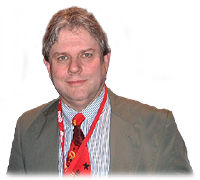 By John Atkinson By John Atkinson
"Without content, television is nothing more than lights in a box."—Edward R. Murrow, 1958 "When it comes to video, most audiophiles are insufferable snobs."—J. Gordon Holt, 1984 Those who have followed the arguments between audiophiles and home-theater enthusiasts in the pages of Stereophile—I lifted the Murrow quote from a 1996 battle between Steve Guttenberg (representing the former community) and Joel Silver (representing the latter)—will have no doubt over which side of the argument I am on. As I wrote in our March 1993 issue, recorded music is a "hot" medium in Marshall McLuhan's terminology—divergent, with infinite potential—whereas movies are "cold": convergent, what you see is what you get. I had written that 1993 essay, "I Say It's Television," in response to the many people I had encountered at that year's Winter Consumer Electronics Show who had told me that Stereophile's survival would depend on whether or not we started reviewing video and home-theater components. This was a view shared by Stereophile founder J. Gordon Holt, who responded to my thoughts in our June 1993 issue with an essay, "I Say It's Video." And, as you can see in the 40th-anniversary article I wrote on the magazine's history, the ever-prescient Gordon had devoted Issue No.8 of Stereophile, published in 1964, to home theater! Gordon was careful to define "video" as being different from "television"—as being "original, uncut movies for people who don't like what's happened to [movie] theaters." The success of the DVD medium seems to have borne his prescience out. And while Stereophile continued to thrive despite—or, more likely, because of—its devotion to music reproduction, in January 1995 we launched a companion publication, Stereophile Guide to Home Theater. Initially an annual the same size as its parent, the Guide, as everyone involved in its creation referred to it, went to publishing quarterly in January 1996, then to 10 issues a year in January 1998 with a bigger page size, lavish use of photography, and a crack team of editors and writers, including columnists Joel Brinkley and Michael Fremer, as well as Thomas J. Norton, erstwhile technical editor of Stereophile. (Tom remains unchallenged as a writer on home theater, in my view, by penning the lion's share of a 10-piece, 41-page special report on the then-new DVD medium in the Guide's Winter 1997 issue, a report I still refer to when I need to look up something about the medium.) Stereophile Guide to Home Theater celebrated its 10th anniversary in January, but not, however, under that name. When Stereophile, Inc. was sold to Petersen Publishing in 1998, its publications ended up as stablemates to Home Theater magazine, which also celebrated its first decade of continuous publication in January. It should be obvious that the potential for name confusion among Stereophile, Stereophile Guide to Home Theater, and Home Theater was significant, and it's fair to say that, despite the quality of its content, the Guide was overshadowed by its more widely distributed siblings. A now departed Primedia VP took the difficult decision to bring the confusion to an end by renaming the Guide. From its June 2004 issue onward, it was published as Ultimate AV, a title that reflected its high-end leanings compared with the more populist Home Theater. The next step in the book's evolution was to migrate to the Web. The January 2005 issue of Ultimate AV was the last published on paper. As editor Tom Norton explained in his first online "Viewpoints" essay, "As I've surfed the popular audio, video, and home theater Internet destinations over the past few years, it has become more and more apparent that the AV hobbyist's first choice for information is now the Web, not print. In a world where the largest expenses of producing a magazine are the Big Three (Printing, Paper, and Postage)—none of which add anything to the actual information conveyed—finding a way to eliminate those costs and still provide the same service, or better, is a no-brainer." While I think the decision to take Ultimate AV online is the right decision for that publication, it is increasingly hard these days to define a publishing venture in terms of what media it appears on. Stereophile will continue to take advantage of what both the Web and the world of print have to offer. I don't think of our website, or our e-newsletter, or the print magazine, or the Home Entertainment Show, or even my recordings, as separate entities. They are all manifestations of the core concept that is "Stereophile," each attuned to its own medium. You might read something in our daily online CES coverage or in our e-newsletter, but the continuation of that thought may well appear in a Web item, be commented on in the paper magazine six weeks later, with then further thoughts appearing in the website's "Soap" or the print equivalent, our "Letters" column, finally to be archived in the site's Archives section. In a sense, everything that appears in any of the ephemeral media is merely fuel for the passion that underpins any successful publishing venture. This "Editor's Desk" essay was triggered by a day I spent at the end of March hanging out with Tom Norton, following some corporate meetings in which we had both been involved at Primedia's Los Angeles office. When we both lived in Santa Fe, going to Tom's to see a movie in his built-from-scratch, state-of-the-art home theater had been a weekly weekend treat. But now that Tom lives in the San Fernando Valley and I live in God's own borough of Brooklyn, I see movies primarily at our local sticky-floored multiplex. Tom's current house is not as lavishly appointed as his New Mexico house had been, but his room is well-proportioned and acoustically treated, and to say I was bowled over by the quality of his system is an understatement. Other than the projector, a Fujitsu LPF-D711 LCD, Tom's system was not outrageously expensive. The speakers were all from Revel's Performa series: F32s left and right, C32 center, B15 subwoofer, and a pair of M22 "bookshelf" monitors on stands for surround duties. (This system was reviewed in the December 2004 UAV.) The receiver was a Sony STR-DA9000ES, the DVD player a Marantz DV8400, and the screen a 16:9 Screen Research ClearPix2 with an 80"-wide (not diagonal) image. The cables from receiver to the front speakers were Monster M2.2s (single-wired), with older Monster THX cables (also single-wired) serving the surrounds. Whether it was the visual and sonic outrageousness of The Incredibles or the understated Kate and Leopold, there was a righteousness to the presentation in Tom's system. No, I am not going to abandon music in favor of movies. But finally I comprehend the passion that drives a videophile like Tom and that underpins his magazine.—John Atkinson |
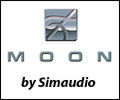 |
Simaudio Ltd. Simaudio Ltd., celebrating 25 years of excellence, manufactures state-of-the-art components for both 2-channel and home-theater systems. Maintaining a world-class reputation, we continually push the performance envelope to the next level with each new product. Visit us at www.simaudio.com. |
||||
|
From Wes Phillips
Not strange, but a delight: David Byrne has a Web radio station, on which he plays his current favorite songs. What a great playlist—who else segues from Jeri Southern to Jimi Hendrix these days? |
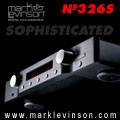 |
Mark Levinson Mark Levinson, established in 1972, is a world-renowned manufacturer of the finest stereo and multi-channel electronics. Products range from awe-inspiring monaural power amplifiers to the industry benchmark CD processor. For more information on all Mark Levinson products, please visit www.marklevinson.com. |
||||
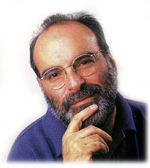 By Ken Kessler By Ken Kessler
UK: SOMERSET, NEW LS3/5A: FOR REAL THIS TIME
It's a story with a nasty beginning but a wonderful outcome. At least three serious parties (as opposed to mere optimists) wanted to revive the LS3/5a, a speaker that has sold, by most reckonings, about 100,000 pairs. Estimates put its current potential sales, thanks to continued cult worship, at anywhere from 300 to 1000 pairs per year—nothing to sneeze at, if a going price per pair of $1500-$2000 (depending on finish) is viable. While eBay and the second-hand market always seem to conjure up pairs of LS3/5a's, there are those who want brand-new units, especially in light of the speaker's fragility due to its limited output and the lack of spare drive-units. Crossovers and cabinets presented no problems, and ample supplies of the now-obsolete Tigon grille material was available. But to fully revive the speaker would require a new supply of KEF-made B110 woofers and T27 tweeters. KEF, however, was no longer prepared to make these drivers, so the tooling was presented to Harbeth, to produce them for KEF's use as spares. I've seen contradictory e-mails that attempt to clarify the situation; suffice it to say that Harbeth's Alan Shaw has chosen not to participate in or encourage the speaker's revival, especially because he feels that it will harm sales of Harbeth's own small two-way model, the HL-P3ES-2. But Stirling Broadcast's license to manufacture the LS3/5a still had some years to run. So Doug Stirling, committed to satisfying demand for this classic and not to be deterred, took a lateral approach. Given that the LS3/5a has been licensed by the BBC to at least seven manufacturers over the years, there are plenty of engineers around who know what's involved in making and testing the speaker. The new cabinets are actually said to be superior to the originals, and also to be more in keeping with the legendary "BBC Nos. 001/002," which remain in the possession of one of the original designers' sons. [The designers were apparently H. "Dudley" Harwood of the BBC's Research Department and M.E. Whatton and R.W. Mills of the BBC's Designs Department.—Ed.] The crossovers were the secret core of the project, because they "voice" the final result. A crossover exists to make two or more drivers behave in a certain way, and there are numerous solutions to how one applies crossover slopes and other values, so it was not necessary to go cap in hand to KEF. Instead, Doug Stirling found a designer who knew how to engineer the correct crossover. That left the drive-units. With his golden-eared collaborator, Doug Stirling embarked on a program of finding a woofer and a tweeter to play the parts of the B110 and T27, the sounds of which would then be tailored by the crossover to replicate the sound of the original. According to Stirling, they have been so successful that the BBC has allowed him to call the end result an "LS3/5a" with one proviso: it must bear the suffix "V2" to distinguish it from those with KEF drivers. Having spoken with members of the LS3/5A support group—a finicky lot—I've learned that the response to the resurrected LS3/5a has so far been unanimously positive. More than one likened its sound to that of the ur-pair. (I've heard those originals and can attest to their sublime performance.) One of the more fastidious members even bought a pair of LS3/5a V2s, despite owning assorted originals. Meanwhile, the speaker's "tifosi" have gleefully pointed out two things. The first is the immediate and obvious benefit of the speaker's using readily available SEAS 5" woofers and ScanSpeak tweeters, so mishaps no longer leave owners with useless boxes. The second is that those mishaps—which inevitably involve overdriving the speakers—are less likely to happen because the LS3/5a V2 can handle more power than the original, especially at low frequencies. It's so robust, in fact, that Stirling Broadcast will offer a five-year warranty. Doug Stirling and his anonymous designer put this down to the inherent capabilities of the new drivers and to the crossover, which has benefited from audiophile-grade polypropylene caps and inductors. The V2 speaker, by the way, offer the biwiring option and the 11 ohm impedance of the second-generation design. Stirling Broadcast will offer the LS3/5a V2 in the original finishes of walnut, black, and rosewood, as well as such luxury veneers as bird's-eye maple and ebony. I, for one, hope it's a smash hit, because I number myself among the speaker's most fanatical supporters. Stirling Broadcast Tel: (011) 44-1963-240 151 Fax: (011) 44-1963-240 152 Website
UK: LONDON, KATRINA DOES IT HERSELF
Leskanich has chosen to sell Turn the Tide directly, via her website, and it's worth procuring. Her voice remains strong and powerful, the songs are uniformly excellent, and the sound quality is superb—home-made or not. As my colleague Michael Fremer would put it, it's in heavy rotation this month, along with Keb' Mo's Peace: Back By Popular Demand,, a CD of audiophile sound quality if ever I've heard one, and the ignorantly maltreated California, by Wilson Phillips—complete with Daddy Brian Wilson on board. |
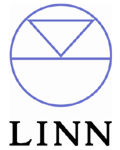 |
The Linn Unidisk 1.1 How to audition the only product to receive three Stereophile Product Of The Year Awards in 2004!:
• Stereophile Joint Product of the Year 2004 To find your nearest Linn dealer for an audition of this remarkable product, email: helpline@linninc.com |
||||
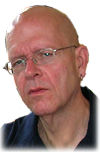 By Wes Phillips By Wes Phillips
China, My China It all started, as do so many things in my life, over dinner. While www.stereophile.com's web-monkey Jon Iverson and I were covering the 2005 Consumer Electronics Show for the website, we cadged a meal ticket off IAG's vice president of sales and marketing, Jim Knight, and product manager Julian Maddock. A little eatin', a little drinkin'...and the next thing you know we were talkin' bidniss. "IAG," I said, enunciating carefully—harder than it sounds after two courses and a few glasses of Bonny Doon Critique of Pure Riesling (love that name). "I know the company bought Wharfedale and Quad, but I don't really know very much else. Who are you guys?" "IAG was founded by the Chang brothers, Bernard and Michael," Julian said. "Their company, Sanecore, made a lot of money importing karaoke gear into China when Deng eased up trade restrictions. Later, when local manufacturers started competing with the equipment they were importing, they decided to explore the long-term possibilities of manufacturing world-class equipment in China." I knew what that meant: cheap labor. However, to paraphrase businessman Bob Dylan, I was drinking their wine, so I remained silent. But not inscrutable, apparently—about 10 days later, Jim Knight called me and asked, "How would you like to examine IAG's manufacturing facilities?" I was dubious. The trip from Brooklyn to China is a long one, and I'd already made up my mind. But, as they say, it's what you learn after you know it all that's important. I signed on.
Did I say a long trip?
In the haze of the morning, China sits on eternity
It was the China of my dreams. I can't begin to number all of the hours I've spent gazing at the Chinese art in the Freer Gallery in Washington, DC, but until that moment it had never occurred to me that artists of the Qing dynasty were realists. It really looks like this, I marveled. [WP's scrapbook of China photos can be found here.—Ed.] Then I heard a table saw rip into some heavy timber. I turned in the other direction and my jaw dropped again. The IAG industrial park resembled a small city. How big is it? Well, what time is it now? IAG's official estimate is a million square feet of factory floor, but I walked through several newly completed, hangar-sized buildings and saw at least another five under construction—one of them six stories tall. The entire time I was there, trucks full of raw materials were trundling onto the site, some filled with supplies for the factory, but just as many toting concrete and rebar. I walked by a crew of masons beginning to construct a wall one day; the next morning, I watched a crew slapping paint on the completed and skim-coated finished product. Then there were the 20 buildings that were fully operational. IAG claims its Shenzhen factory is one of the largest custom-designed electronics facilities in the world. I believe it. So forgive me if I disbelieve the million-square-foot figure, but that seems so yesterday. IAG's manufacturing facilities are ISO 9001 certified, which means that they meet strict international standards for quality control and quality assurance. Everywhere I went within the plant, QC engineers were checking the output of that section's floor crew. That means that a part is made, and it's checked. That part gets incorporated into an assembly, and the assembly is checked. That assembly gets incorporated into a subassembly, and then that's checked—as is the final product. Everywhere I went in the plant, the noise of manufacture was accompanied by the electronic swoops and burbles of the quality-control crew's test gear. One of the most impressive sights on my rounds, in fact, was the sample room, which contains a calibrated, second-generation reference sample of every driver IAG makes. ("Second-generation" means the first real product run after a prototype has been approved.) These are signed and dated by members of the R&D department, run by Steve Hewlett—IAG's chief of engineering and a longtime driver magician, formerly of Celestion—and random samples of each run are taken offline and compared to the reference samples to ensure consistency. But I'm getting ahead of myself. As we walked (and walked and walked) to the first building on our tour, Steve Hewlett recited a few statistics. The 1500 employees are pretty evenly divided between the sexes, and that new six-story building we saw being erected was the future woodshop facility. And everything has been built without a mortgage or the burden of debt. The Changs put a lot of their money where their mouths are, and they bet it all on the future. That's thinking long-term. IAG makes Wharfedale and Quad, but also Apogee lighting, Wharfedale Pro (mixers and DJ speakers), Airedale (loudspeakers aimed at the Japanese market), Leak (another classic British marque, currently producing primarily for the Asian market), and Quad Industrial (architectural speakers). As we walked, I noticed a groundsman sweeping up debris and dumping it into a box labeled Vox Valve Reactor Amplifier. I took a photo of it—I've always been mad about the chimey AC-30—and Hewlett casually said, "We make those here. Would you like to see the assembly line?" Of course I did. But jeez, you must be busy when you forget to mention an entire brand.
Clocks ticking slowly, dividing up the day
As a driver designer, Steve Hewlett was quite chuffed about this. "If I need a different cone flare or dream up a new motor assembly, I can draw it up and walk the plans over here from my office in a few minutes. And these guys give me a prototype to play with fast. In the UK, you'd be talking about a six-month lead time on something like that." Of all the milling, cutting, and punching machines on the shop floor, my favorite was the press that turns huge rolls of steel into huge rolls of perforated speaker grille. Think of a locomotive-sized pasta press and you're pretty much there. Another fascinating experience was watching a crew at work on the casting molds for a new remote control. Most companies have to choose from a stock remote pattern; it was impressive to see someone actually making one—or should I say, making the part that would make one? After the tool-and-die works, we tromped through several facilities that make the component parts that later get stuffed into finished products: PCBs, control knobs, chassis, faceplates, stamped covers, molded shells, and drivers, drivers, drivers—more than 600 models. There was quite a mix of high and low tech. We watched crucibles of molten aluminum being cast into speaker baskets—and at 700º Fahrenheit, that's impressive—and watched guys feeding sheets of fiber into vats of pulp slurry to make paper speaker cones. "We've even discovered a special kind of wood here in China that makes for a far better driver," Hewlett said. "Sorry, but it's a secret." I watched injection-molding machines the size of boxcars making huge speaker cabinets for the Wharfedale Pro line, and guys with 3' bench planes create the longest, thinnest curls of hardwood imaginable as they prepared the clinker-built underlayer of a curvilinear Wharfedale Opus 3 loudspeaker for its veneer—technology that Thomas Jefferson would have felt at home with. I was also hypnotized by the crew that was putting piano-lacquer finishes on speakers in one of the finishing rooms. I've pulled a certain amount of lacquer myself, enough to recognize that these cats were good. "Actually," Julian Maddock told me, "that's a pretty good insight into how the Changs operate. When we first thought of offering a lacquer finish, we were concerned that it must be absolutely of the highest quality, so we searched around for the best local company and hired them. When we were convinced that they could consistently meet our quality standards, the Changs bought the company and moved it on-site." Actually, that's sort of how it worked with Quad, too. Quad, of course, like Wharfedale, has roots that stretch back to the dawn of British hi-fi—in Quad's case, all the way back to 1936. However, in the late 1980s and 1990s, Quad's relentless innovation flagged under what many feel to be an acquisition that was not sympathetic to the firm's history or corporate culture. Many observers feared that IAG's purchase of Quad would be more of the same. "Even I was concerned about that," Julian Maddock said. "I reckoned that if I was going to stick around, they'd have to convince me they were serious about re-establishing Quad as an authentic high-end company." And? "I'm still here."
I've wandered around and you're still here
"Of course," Steve Hewlett said, "it was never meant to travel, so it shook itself to pieces on the trip over here. The big problem in putting it back together is that it used a pneumatic control system—it was built way before digital—and that's technology that predates almost any engineers still working today. Fortunately, I studied a bit of it in school and I took tons of photos before we disassembled it, so we were able to get it up and running. Eventually." IAG also shipped out a bunch of longtime Quad service staff from Huntingdon, folks such as Paul McConville (30+ years), Ken Bunting (30+ years), and a relative newcomer, Rob Flain (15+ years). They stayed until they were satisfied that the new plant was making Quad products as well as they themselves had always done. IAG oversaw the upgrade to the ESL-988 from the ESL-63, as well as the introduction of the big-gun ESL-989. It also brought the new 99 series of components to fruition, including a very nifty $1049 CD player with variable line out, digital switching, and digital inputs, a sample of which I immediately requested for review. What really thrilled me was seeing on the assembly line the legendary Quad II monoblocks (now called the Quad II Classic, $1349.99/pair). "Not original spec," Julian said, "because you just can't get a lot of those parts any more—but we spent a lot of time voicing them to sound like the originals, while taking advantages of advances in parts quality." There's a matching Quad 99 preamp ($899.99), as well as a new, higher-output tube amp, the Quad II-40 ($1799.99/pair). Now there's even a brand-new tube preamp, the QC-24 ($899.99), which uses a special milspec miniature dual-triode tube soldered directly to its circuit board. "Wow, " I said to Julian. "What's the tube life on that baby?" "We're not sure. We've never managed to exhaust one." And yes, there are moving-coil speakers in the Quad line these days. "Not everybody has the space for the ESLs," Julian said. "For instance, even hard-core 989 owners probably can't employ even a pair of 988s in their bedroom systems—or in the rear channels of their home cinema systems—so we needed to face the reality of the marketplace. But we also had to make sure the 11Ls were true to the Quad identity, not to mention completely differentiated from, say, our Wharfedale compact monitors." A lot of people think they've succeeded. The UK's What Hi-Fi/Sound & Vision awarded the Quad 11L their Product of the Year award in 2002 and 2003. You may be wondering why I'm devoting so much space to Quad when IAG makes many other marques. Partially, I suppose, it's because it was exposure to a pair of ESL-57s that sparked my love—actually, my awareness—of the High End. Also, what I saw in IAG's attention to the Quad ethos applied to its other brands as well—but I'll spare you the brand-by-brand blow-by-blow. Let the part stand for the whole. By the time we'd made it through the Quad part of the factory, we'd been walking for close to three hours and were wearing out. But I wasn't ready to quit. "I want to see you making Vox AC-30s," I whined as the lunch siren sounded. "Too late," Steve said. "Everyone will be at lunch for the next two hours." Two hours? It turns out Noël Coward wasn't making it up about it being only mad dogs and Englishmen that go out in the midday sun of the tropics. Fortunately, Steve Hewlett is an Englishman, so I convinced him to tramp up another three flights of stairs to show me the Vox assembly line, if not any actual assembly. There, I discovered my dream job. In a little soundproofed room in the middle of the factory floor, I saw a Fender guitar and a 2x12 speaker cabinet. Remember when I said that ISO 9001 dictates constant quality control? Well, a very lucky guitarist in Shenzhen has the job of grabbing random Vox heads and combos off the assembly line and taking them into that room to play until he's convinced they meet spec. He gets paid for it, too.
In the blue distance, the vertical offices bear their names
Of course, IAG is taking advantage of China's vast pool of affordable labor. I'm sure that, like all companies that manufacture in the People's Republic, it's also taking advantage of a more relaxed regulatory structure. But none of that changes the fact that the IAG facility is one of the most sophisticated and quality-conscious I've seen anywhere—including some of the most forward-thinking high-end factories on the planet. More than that, there was an energy present at IAG that made its success seem inevitable. The labor force on the factory floor ranged from the extremely unskilled to the cream of China's technical and engineering schools, but one thing remained constant: These people take pride in what they do. There was a language barrier, of course, so I don't know whether that pride was in moving China forward or in the products they were making, but I do know pride and determination when I see it. Boy, did I witness it in Shenzhen. I'm going to start learning Chinese. It's going to come in handy if I intend to continue writing about high-end audio. |
| To unsubscribe, simply reply to this email with the word 'unsubscribe' in the subject or body of the email. |
| Subscribe To This Newsletter • Stereophile Home Page |
| Print & Web Media Kit • Privacy • Contact Us • Letters to the Editor |
| Subscribe to Stereophile Magazine |
| Copyright © Primedia Magazines, Inc. All rights reserved. |